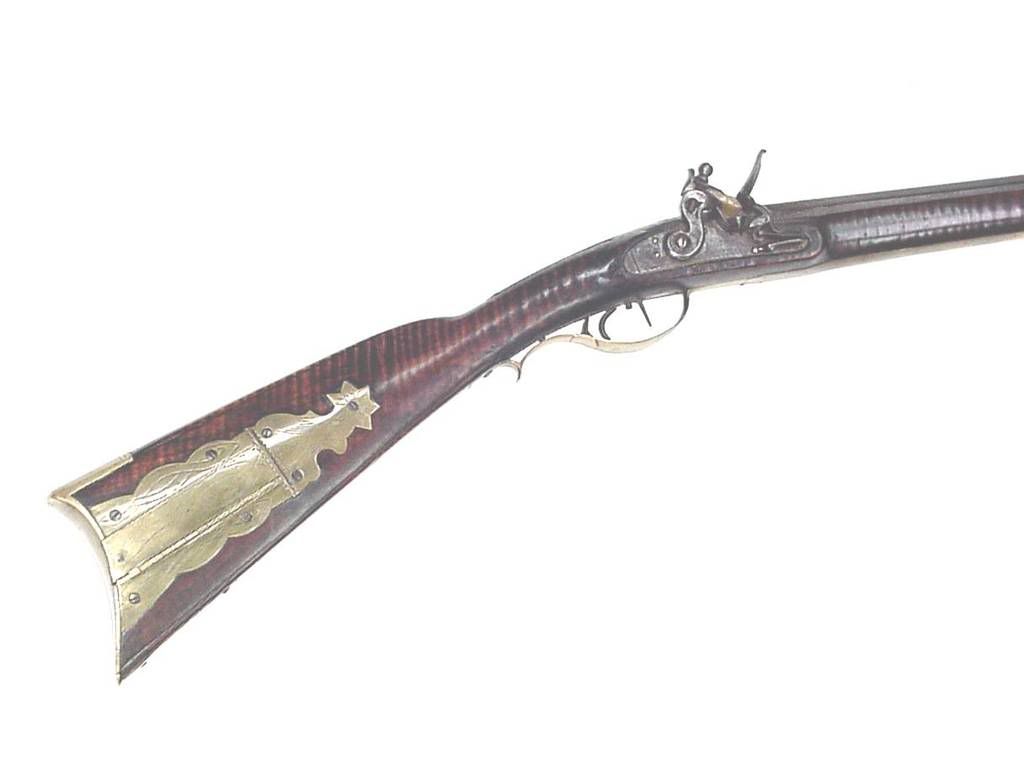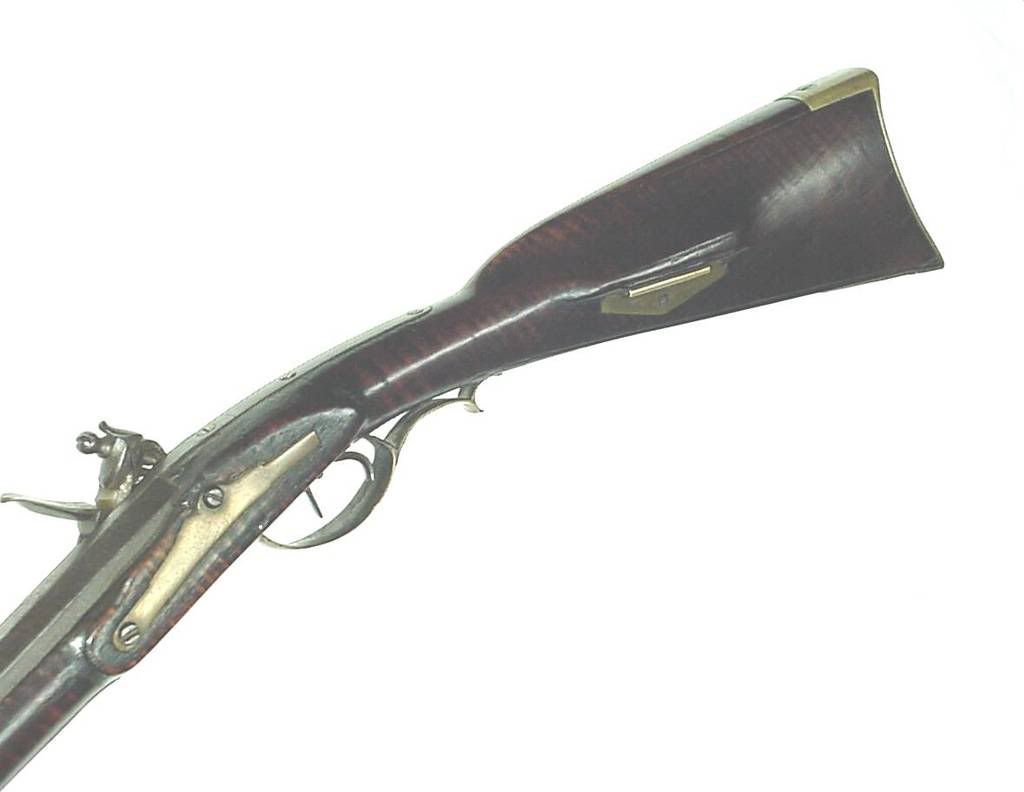Attributed to Craft Jackson- Jamestown School 1810-1820. One of the earliest known gunmakers from this school.
Rifle in pristine condition from Texas estate. Side-opening patchbox with daisy or star patchbox finial. 46" swamped barrel in 50 caliber.
North Carolina Rifle
This attractive rifle has just surfaced from an estate in Texas. According to Bill Ivey, well-known student of longrifles of North Carolina, this rifle is rather early in the scheme of things, possibly dating as early as 1800 or 1805. He calls it a “transitional” piece between the Deep River School and the development of the later very productive gun building center that developed in Jamestown, Guilford County, North Carolina.
The relatively long barrel is 46 inches in length, .50 caliber and nicely tapered and flared, making for a lightweight and well-balanced rifle. The butt is a full 1 ¾ inches wide and if not for the early 19th century (un-altered) flintlock mechanism, the overall architecture of the piece would suggest that the rifle could easily date into the later part of the 18th century. The butt stock has the incised molding line along the comb that is found on rifles in most every section of piedmont North Carolina, as well as the patchbox release concealed under the thin sheet brass toe plate, that presses on a pushrod unlatching the lid which is lifted by a spring attached along side the rather deep box cavity. The barrel tang on the rifle is long, is held with three screws and extends almost to the tip of the comb, a feature indicative of the later Jamestown School rifles. The forestock molding is what John Bivins labeled in his book, Longrifles of North Carolina “type C”, which consist of an incised line with a relieved area above, creating a “bead” along the upper edge of the relief carved forestock molding. This is a design that seems to be used most commonly in the Randolph-Guilford county area. The butt stock has a similar, although not identical, incised line molding, terminating in a nice “lambs tongue” type finial on either side at the rear extension of the trigger guard. Starting at the front extension of the trigger guard is a wear plate that continues along the underside of the forearm, butting into the apron of the rear entry thimble. This long brass plate is fully inlet and tacked with 20 iron nails holding the functional yet decorative feature in place. The rifle appears to be in un-touched condition, with no obvious restoration. Even the tapered ramrod with a tiny forged iron tow worm appears to be original equipment.
Perhaps the most intriguing feature of the rifle is its brass box. At first glance the patch box appears to be a somewhat normal four-piece box with the stylized “shooting star” finial often associated with Moore County as well as the Randolph Guildford county areas. Then…one notices that it is actually a “side-opening” box, with the hinge being fashioned along the edge of the lower side panel of the boldly “guilloche” engraved component that is also designed in a style readily associated with Randolph and Guilford Counties. Although the rifle would be considered un-carved, along with the forstock and butt moldings, it does have the typical Jamestown style “pick-holder” inlay under an ample and nicely relief molded cheek piece. Overall…this rifle is just a pleasure to hold, look at and fondle, bringing new aspects into the study of early North Carolina rifles.
NOTE: Mr. Ivey is finishing the photography for his up-coming book entitled, “Schools of Gunsmithing in North Carolina”; hopefully to be in print by 2009. Anyone having knowledge of rifles that should be included in this study please contact us.
www.americanhistoricservices.com 



Comments:
--------------------------------------------------------------------------------------------------
What graceful lines! Very interesting patchbox.

